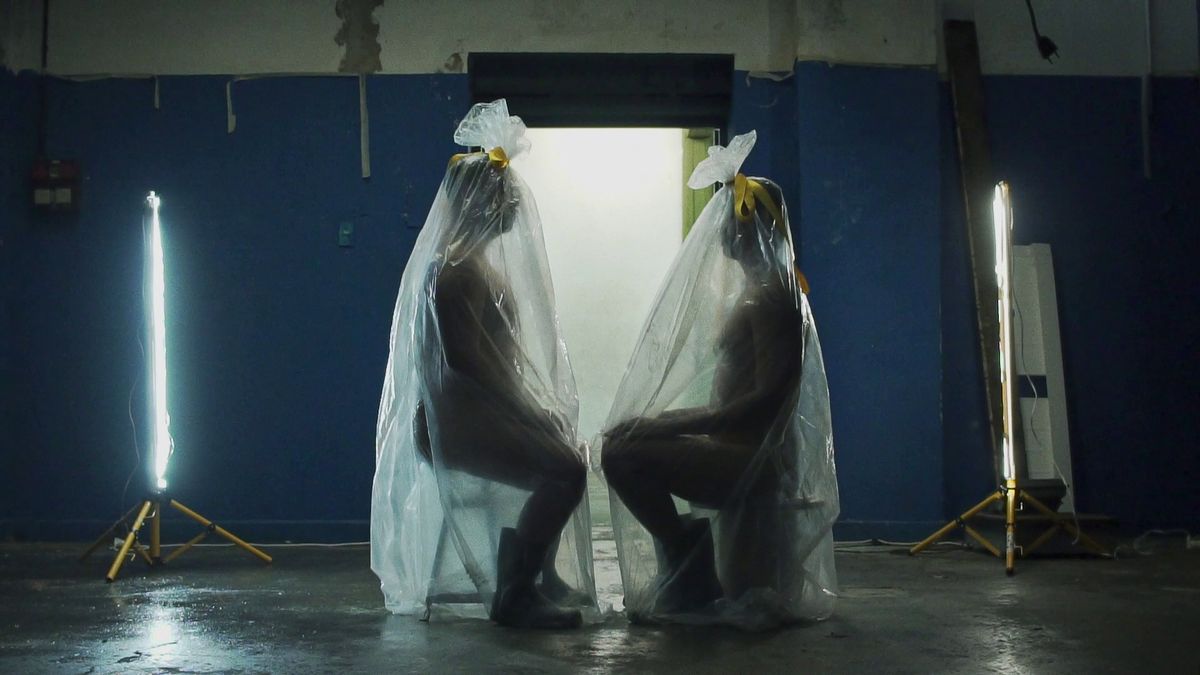“What the night tells the day”title of the novel by the Argentine writer Hector Bianciotti (1930-2012) whose plot is related to the migration of his parents and his own migration to Europe and also as a tribute to the writer who lived in Paris from 1961 until his death, served as the basis for this exhibition of 22 Argentine artists established on the international scene.
Photographs, installations, sculptures, videos and performances which have the collaboration of Tenaris in Italy and the company Ternium in Argentina, many of them recently exhibited in Milan at the Pavilion of Contemporary Art (PAC) under the curatorship of the director of the National Museum of Fine Arts, Andrés Duprat, and Diego Sileo of the Italian institution.
An exhibition that requires more than one visit due to the quality of the works on display, among them, that of Eduardo Basualdo (Buenos Aires, 1977). In “Passage” , for example, makes a transparent impression of a bird’s body on the glass of a window that refers to the marks left by birds when they crash against closed ones. As always, approaching his works causes bodily tension in the viewer.
“Pandemic Trilogy”, a video by Mariana Bellotto (Mar del Plata, 1963) from a performance performed with the Grupo Performático Sur, a look at the degraded and contaminated world where plastic reigns, a world that appears to protect us but also isolates us.
“National ceremony” by Adriana Bustos (Bahía Blanca, 1965) combines a fragment of the documentary Leni Riefenthal of 1938 during the 1936 Berlin Olympics before the attentive and sinister gaze of hitler and the opening ceremony of 1978 World Cup Socceralso before the attentive and sinister gaze of Jorge Rafael Videlaa shocking combination due to its similarities with the dictatorial and criminal propaganda of both periods.
Of Leandro Erlich (Buenos Aires, 1973) is exhibited “Brooms”, “brooms”, work from 2015. Magic, illusion, deception? Erlich has the virtue of disconcerting the viewer who must discover and understand for himself what it is about. Leon Ferrari (Buenos Aires, 1920-2013) is omnipresent with his emblematic work “Western and Christian civilization”Christ crucified on the model of an American fighter plane, made in 1965 that aroused both censorship and the antagonistic opinions of the public, the media, the church, officials, a critical view of the artist against the barbarism in the face of war from Vietnam.
Against violence he expresses himself Ana Gallardo (Rosario, 1958) through large black papers with barely perceptible lines and phrases at the bottom “They put weapons inside us”, “They searched our genitals”… statements by Guatemalan women during the insurrection in that country that reveal the cruelties against their bodies.
Liliana Porter (Buenos Aires, 1941), lives in New York and needs no introduction. An updated version of “Forced labor” But it is important to highlight one of his statements: “My work is a metaphor of time and death. “Time and death destroy everything”. Like “The Man with the Axe”, he destroys everything. The past disappears but the memory remains, in books and images, and it conditions the future.” His work is a metaphor for what happens to us.
Another artist summoned is Jorge Macchi (Buenos Aires, 1963) that also challenges our perception through different languages: drawing, painting, video, installation, music. His works are unforgettable and, as he puts it, they are not decodable.
The 14 provocative and erotic black and white images taken by Alejandro Kuropatwa by Liliana Maresca (Avellaneda, 1951- Buenos Aires, 1994) published in 1993 in “The Libertine” a monthly magazine. With the intention of breaking the boundaries of individual works and obtaining greater communication with the public, the artist published a notice “Marisa surrenders to her own telephone number.” She was a figure of the Buenos Aires underground and a pioneer of photoperformance. We still remember his chilling installation of coffins on a Persian rug “Wotan-Vulcan”, destroyed work – that we saw in 1991 at the Recoleta Cultural Center.
Cristina Piffer (Buenos Aires, 1953) uses blood powder for his silkscreen printing of paper money issued in the second half of the 19th century by the Bank of the Province of Buenos Aires. “One hundred pesos, twenty pesos, ten pesos” reproduces the bill of that value. At the foot of the work there is that reddish dust. His ascetic work formally highlights his view on the history of our entry into the world market as well as the political violence in Argentine history at that time.
Important exhibition that reveals how politics, the social, the issues of climate change, non-conformism, the unconventional, crossed the life and work of the artists who, in addition to those already mentioned, are Marta Minujin, Alberto Greco, Matías Duville, Lucio Fontana, Nicolás Robbio, Miguel Rotschild, Graciela Sacco, Alejandra Sanguinetti, Tomás Saraceno, Mariela Scafati, Juan Sorrentino and Adrián Villar Rojas who also show their creativity in the face of complex, often negative situations in our society. (Proa Foundation. Av. Pedro de Mendoza 1929 from 12 to 7 p.m. Closed Mondays).
Source: Ambito
I am an author and journalist who has worked in the entertainment industry for over a decade. I currently work as a news editor at a major news website, and my focus is on covering the latest trends in entertainment. I also write occasional pieces for other outlets, and have authored two books about the entertainment industry.




